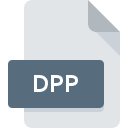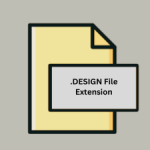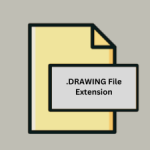.GLOX File Extension

Microsoft Office SmartArt Graphics Layout File
| Developer | Microsoft |
| Popularity | |
| Category | Vector Image Files |
| Format | .GLOX |
| Cross Platform | Update Soon |
What is an GLOX file?
‘.GLOX’ files are used exclusively within Microsoft Office applications to store SmartArt graphics layouts.
These layouts are graphical representations that enhance the visual appeal and clarity of information in documents, spreadsheets, and presentations.
SmartArt offers a range of predefined diagram types, such as organizational charts, process flows, and cycle diagrams, making complex information easier to understand at a glance.
More Information.
SmartArt was designed to streamline the creation of diagrams and graphics within Office documents, catering to both business and educational needs.
It aimed to replace traditional, static diagrams with dynamic, editable graphics that adapt to changes in content or structure.
The ‘.GLOX’ format supports this by storing layout-specific data that defines the structure, colors, styles, and relationships of SmartArt elements.
Origin Of This File.
Microsoft introduced SmartArt graphics in Office 2007, aiming to provide users with a straightforward method to create professional-looking visuals without needing advanced design skills.
The ‘.GLOX’ file extension specifically emerged as a container format to save and share these graphical layouts seamlessly across different Office documents.
File Structure Technical Specification.
‘.GLOX’ files are typically ZIP-compressed archives that contain XML files defining the properties and structure of SmartArt graphics.
Within the archive, XML files specify details such as node positions, text formatting, shapes, and connectors used in the diagram.
This structure allows for easy modification and updating of SmartArt elements within Microsoft Office applications.
How to Convert the File?
Converting ‘.GLOX’ files may be necessary to view or edit SmartArt graphics outside of Microsoft Office. Several methods exist:
- Save As Another Format: In Microsoft Office applications, you can often save SmartArt graphics as static images (like PNG or JPEG) or as other Office document formats (like DOCX or PPTX).
- Online Converters: Various online tools offer conversion services for Office documents, including SmartArt graphics. Ensure the converter supports ‘.GLOX’ files specifically.
- Third-Party Software: Some third-party applications specialize in converting Microsoft Office files to alternative formats, which may include SmartArt graphics.
Advantages And Disadvantages.
Advantages:
- Ease of Use: Users can quickly create and modify complex diagrams using intuitive SmartArt tools.
- Integration: Seamless integration within Microsoft Office applications ensures compatibility and accessibility.
- Visual Appeal: Enhances document readability and engagement through visually appealing graphics.
Disadvantages:
- Limited Customization: While versatile, SmartArt may not offer the same level of customization as dedicated graphic design software.
- Compatibility Issues: ‘.GLOX’ files may not display correctly in non-Microsoft Office applications without proper conversion.
How to Open GLOX?
Open In Windows
- Use Microsoft Office applications (Word, Excel, PowerPoint) to open and edit ‘.GLOX’ files natively. Ensure Office is installed and up to date.
Open In Linux
- Open ‘.GLOX’ files using compatible software like LibreOffice or online Office suites that support SmartArt graphics.
Open In MAC
- Microsoft Office for Mac supports ‘.GLOX’ files similarly to its Windows counterpart. Ensure you have the latest version of Office installed.













